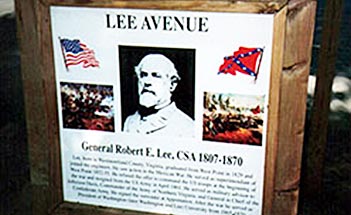History of Chickamauga, Georgia
Chickamauga's Rich History
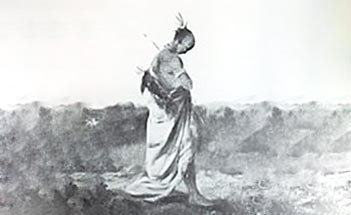 In the early to mid-1800's, the present town of Chickamauga was just a large plantation in the North Georgia rolling hills. The name of the post office was Crawfish Springs-named for Indian Chief Crayfish, of the Cherokee Nation. The Cherokee Indians had settled the area, farming and enjoying the natural beauty of the land. During the War of 1812, five hundred Cherokee soldiers from the area fought with General Andrew Jackson at the Battle of Horseshoe Bend against the Creek Indians, who were aligned with England. Their valor helped assure victory for the Americans. The Cherokee nation was divided into districts and courts with Crawfish Springs being the courthouse site of the ninth district. A courthouse was built in the town in 1820 and the first court in Cherokee (now Walker) County was held here. The Cherokees called this area their home until their forced exodus in 1835, leading to the Trail of Tears.
In the early to mid-1800's, the present town of Chickamauga was just a large plantation in the North Georgia rolling hills. The name of the post office was Crawfish Springs-named for Indian Chief Crayfish, of the Cherokee Nation. The Cherokee Indians had settled the area, farming and enjoying the natural beauty of the land. During the War of 1812, five hundred Cherokee soldiers from the area fought with General Andrew Jackson at the Battle of Horseshoe Bend against the Creek Indians, who were aligned with England. Their valor helped assure victory for the Americans. The Cherokee nation was divided into districts and courts with Crawfish Springs being the courthouse site of the ninth district. A courthouse was built in the town in 1820 and the first court in Cherokee (now Walker) County was held here. The Cherokees called this area their home until their forced exodus in 1835, leading to the Trail of Tears.
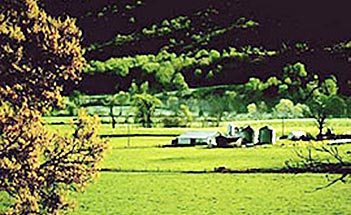 The area was settled once more by farm families and life was busy and fruitful in the fertile valleys until even this remote part of the south was visited by the sounds of cannon and guns during the War Between the States.
The area was settled once more by farm families and life was busy and fruitful in the fertile valleys until even this remote part of the south was visited by the sounds of cannon and guns during the War Between the States.
 The Battle of Chickamauga, named after the Chickamauga Creek which flowed nearby, was fought September 19-20, 1863 and involved more than 110,000 soldiers of the Northern and Southern Armies. Union General William Rosecrans had his headquarters at the Gordon Lee Mansion prior to the battle. The Mansion, completed in 1847, is still standing today. It also served as the site of seven division hospitals during the battle, where soldiers were cared for in the home and adjacent buildings. There were so many wounded that many Union doctors remaining behind to care for the wounded as the South captured the hospital site. Many parched and wounded soldiers from both sides drank from the town's bubbling Crawfish Spring, which is still active today.
The Battle of Chickamauga, named after the Chickamauga Creek which flowed nearby, was fought September 19-20, 1863 and involved more than 110,000 soldiers of the Northern and Southern Armies. Union General William Rosecrans had his headquarters at the Gordon Lee Mansion prior to the battle. The Mansion, completed in 1847, is still standing today. It also served as the site of seven division hospitals during the battle, where soldiers were cared for in the home and adjacent buildings. There were so many wounded that many Union doctors remaining behind to care for the wounded as the South captured the hospital site. Many parched and wounded soldiers from both sides drank from the town's bubbling Crawfish Spring, which is still active today.
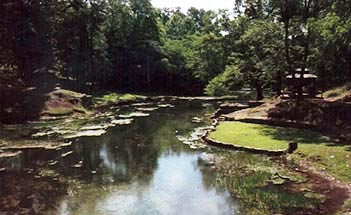
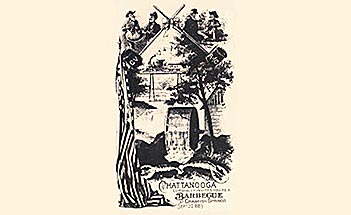 Crawfish Springs was also the site of one of the greatest barbecues in US history, The Blue and Gray Barbecue of 1889. Approximately 14,000 soldiers, both Northern and Southern, who fought in the Battle of Chickamauga, returned to the site 26 years later to smoke the pipe of peace, heal wounds, and help start the Chickamauga-Chattanooga National Military Park, known as the Chickamauga Battlefield. The Chickamauga Battlefield, dedicated in 1890, is located just north of the City of Chickamauga and is the oldest and largest Civil War Battlefield in the country.
Crawfish Springs was also the site of one of the greatest barbecues in US history, The Blue and Gray Barbecue of 1889. Approximately 14,000 soldiers, both Northern and Southern, who fought in the Battle of Chickamauga, returned to the site 26 years later to smoke the pipe of peace, heal wounds, and help start the Chickamauga-Chattanooga National Military Park, known as the Chickamauga Battlefield. The Chickamauga Battlefield, dedicated in 1890, is located just north of the City of Chickamauga and is the oldest and largest Civil War Battlefield in the country.
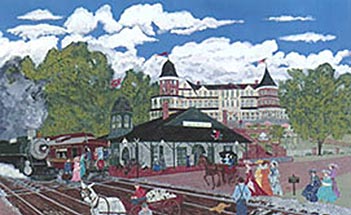 When the city was incorporated, the city's north-south avenues were named for Union and Confederate Generals. Today, avenues named for Longstreet, Hood, Crittenden, Stewart, and more, are clearly marked by large, wood framed signs displaying a description of the General's accomplishments, his picture, and flags of the period.
When the city was incorporated, the city's north-south avenues were named for Union and Confederate Generals. Today, avenues named for Longstreet, Hood, Crittenden, Stewart, and more, are clearly marked by large, wood framed signs displaying a description of the General's accomplishments, his picture, and flags of the period.
The City's downtown district has been given a "facelift" to look more like they might have in the early days of the 1900's, through a streetscape project.
Recognizing the attraction of our historical assets to tourists and history buffs, many are now open for your visit, most have free parking and a small admission charge, and all guarantee an informative, relaxing visit.

